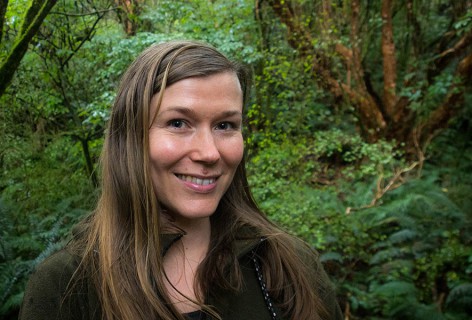A new study led by Dr Jo Carpenter, a post-doctoral researcher at Manaaki Whenua – Landcare Research, has shown that it’s not just the loss of beneficial species interactions that we should be worried about, but also the loss of “negative” interactions such as destroying seeds or parasitism.
“It’s easy to understand why we should be worried when pollinators or seed dispersers have gone extinct,” says Dr Carpenter, “but ecologists tend to be less concerned about losing so-called ‘negative’ species interactions such as seed predation. These are important functions in island ecosystems too, yet we know very little about them”.
Dr Carpenter and her co-authors labelled the extinct native species that destroy seeds the “forgotten fauna”. Her team examined the role of lost seed predators on three island groups: New Zealand, Hawaiʻi, and the Mascarenes, by surveying all the native vertebrate animals that would have destroyed seeds on those islands. The islands originally had unique communities of seed eating birds, ranging from jewel-coloured finches in Hawaii to huge flightless moa in New Zealand. The gizzards of moa contained up to 5 kg of stones to grind their food, while other birds had specially adapted beaks to crack seeds open.
“Sadly, between 63 and 89% of native vertebrate seed predators are now extinct on these islands,” says co-author Dr Janet Wilmshurst, also from Manaaki Whenua. “These islands have new, introduced seed predators such as rats, mice, pigs, and introduced birds. We studied whether the new introduced seed predators could step in for some of the extinct ones, and do the same ecosystem jobs.”
Unfortunately, the study showed this was unlikely. The researchers assessed the traits of the native and introduced seed predators, to see whether they were functionally similar. In most cases, the new seed predators were quite different to the original seed predators, and therefore may be introducing entirely new impacts for plants.
“These introduced seed predators could be gradually restructuring forest communities by eating the seeds from only preferred plants,” says co-author Professor Don Drake, from the University of Hawaii. “For example, introduced rats have altered plant communities across several archipelagos by destroying the seeds and seedlings of preferred species such as palms. Of course, the original native seed predators were probably doing this too. But now it’s likely to be happening to different plants, in different ways, and with different intensities of pressure.”
The researchers hope that the study will help conservation biologists realise the importance of native species that have different kinds of ecosystem roles, not just positive ones. “Often, conservationists aim to restore a complete ecosystem so that all the different pieces are present and functioning again,” says co-author Dr Kim McConkey from the University of Nottingham. “To do that properly, we need to restore all the roles that species play, like parasitism, herbivory, and predation – not just the good stuff.”

